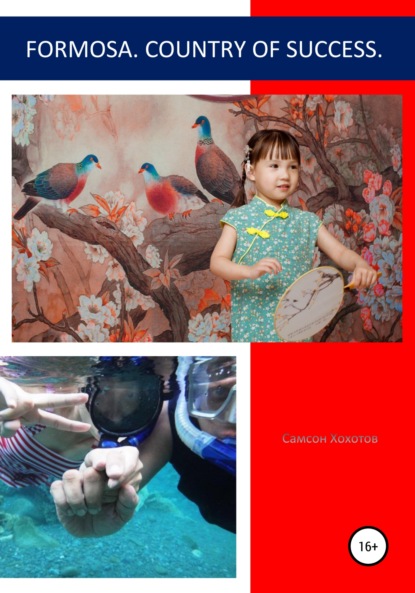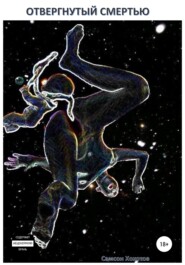По всем вопросам обращайтесь на: info@litportal.ru
(©) 2003-2024.
✖
Formosa. Country of success
Настройки чтения
Размер шрифта
Высота строк
Поля
With the support of Soviet military units, the Kuomintang regiments sought to liberate the island from the Japanese. The regiment commander, 27-year-old Ma Chihan, led his troops in the mountains of the southern part of the island. The regiment’s mission was to detain and, if possible, destroy the enemy troops advancing eastward. A Japanese detachment of 2,000 soldiers encircled the men led by Ma Chihan. Ma Chihan positioned his troops up on a hill in an advantageous position and fought off repeated enemy attacks for two days. Then Ma Chihan rallied his troops and overthrew the Japanese in hand-to-hand combat. The Japanese retreated with losses. Tse-yun, at the head of his troops, repulsed the Japanese offensive in the central part of the island. Despite heavy artillery fire, the wounded commander himself led his battalion into a counterattack.
Xin Tse-yun perished, but the offensive was repulsed.The grenade thrower Li Fusheng can deservedly be called the "Hero of the Island's Defence".
This young soldier, a former peasant, became a tank-eliminating specialist. With several grenades suspended on him, he fearlessly rushed towards the Japanese tank and threw a bundle of grenades under its tracks.
During the last Japanese offensive in the southern part of the island, Li Fusheng was wounded six times. The front command awarded the brave grenade thrower and promoted him to Junior Commander.
Machine gunner Wang Pinglu became famous in battles in the central part of the island. Armed with a light machine gun, he crawled up to the enemy battery and killed its crew. The gun battery thus eliminated allowed the liberation troops to launch a swift attack. His heroic deed is still honoured. The feat of another hero fighter, Tszyu Shiyun, was simply amazing. He and his detachment set up an ambush on the enemy, with a task so important, that should his platoon be revealed, it would entail the failure of the entire operation. They
waited sitting at the ambush, when suddenly and quite unexpectedly for them, the enemy threw a Molotov cocktail. The grass caught fire next to Qiu Shaoyun and after a while, the flames crept up to him. An attempt to save his own life, under those circumstances, would undoubtedly have led to revealing himself and the ambush, which meant the collapse of the whole operation. There was only one way out, to burn alive without uttering a single sound, which this hero did. As a result, this operation was a complete success, and Qiu Shaoyun deservedly became one of the heroes of the Kuomintang troops. In 1941, Jiang Zhongzheng's secret service managed to find out about the content of Japanese radio messages through captured Japanese and disclose Japan's plans to strike the US Navy in Hawaii. This information was then subsequently transmitted to the Americans through the military attachе of the Republic of China in Washington. The US ignored these reports and even believed that Chinese intelligence was thereby trying to undermine US-Japanese relations. Roosevelt, however, did not heed Chiang Kai-shek's warning leading to the attack on Pearl Harbor.
After winning the protracted fifteen-year war with Japan, which claimed the lives of millions of Chinese, Chiang Kai-shek decided not to detain prisoners in China. One million, three hundred thousand Japanese soldiers and officers were repatriated. He also did not take reparations from Japan. But most importantly, he strove to eliminate the reasons that divided the two nations – Chinese and Japanese.
After the communists came to power in 1949, patriotic films about the struggle of the Chinese guerrillas in the Japanese-occupied territories flooded the screens of China. And of course, this struggle was led by the communist revolutionaries.
In reality, the Communist Party had been gradually penetrating the regions where there was no military force and order. Japanese troops were stationed unevenly and only partially controlled the territory they had conquered from the Kuomintang. These areas became ideal environments for the expanding communist movement. The US assisted the government in military matters, though cooperation was complicated by mutual mistrust and disputes between Chiang Kai-shek and the American general Joseph Stilwell. After winning the protracted fifteen-year war with Japan, which claimed the lives of millions of Chinese, Chiang Kai-shek decided not to detain prisoners in China. One million, three hundred thousand Japanese soldiers and officers were repatriated. He also did not take reparations from Japan. But most importantly, he strove to eliminate the reasons that divided the two nations – Chinese and Japanese.
After the communists came to power in 1949, patriotic films about the struggle of the Chinese guerrillas in the Japanese-occupied territories flooded the screens of China. And of course, this struggle was led by the communist revolutionaries.
In reality, the Communist Party had been gradually penetrating the regions where there was no military force and order. Japanese troops were stationed unevenly and only partially controlled the territory they had conquered from the Kuomintang.
These areas became ideal environments for the expanding communist movement.
The US assisted the government in military matters, though cooperation was complicated by mutual mistrust and disputes between Chiang Kai-shek and the American general Joseph Stilwell.
At the beginning of the war, the Communist Party managed to recruit a combat-ready army very rapidly however a Soviet diplomat who visited the base of Chinese communists noted that Chairman Mao did not send his fighters to fight the Japanese.
This is evidenced by the only offensive undertaken by the communists being the Battle of One Hundred Regiments in 1940 led by General Peng Dehuai. Mao criticized Peng for revealing the military strength of the Communist Party. During the "Cultural Revolution" (1966-1976), Peng fell victim to the purge of Mao recalling the General's "betrayal." The issue of the USSR's entry into the war with Japan was significant, and its discussion became the reason for the Soviet side to put forward demands to which the allies were forced to agree. Among them was the expansion of Soviet influence in China and the transfer of the southern part of Sakhalin and all the Kuril Islands. It cannot be ruled out that, by persuading the Soviet Union to start a war with Japan and agreeing to the demands voiced in Yalta by the Soviet leader Joseph Stalin, the Allies hoped that the Soviet troops would get bogged down in battles with the Japanese, as the Allied forces. On the other hand, it was calculated that the preparation of the USSR for the beginning of military operations in the Far East would force the Japanese command to stop the transfer of the most combat-ready units from there, which began in 1944 and significantly influenced the course of battles in the Pacific Ocean. Already after the Soviet troops reached the coast of the Yellow Sea, it became clear that the Allied command did not expect such a speed of movement from them.
For example, American ships which were supposed to bring landing troops to the cities of Dalian and Lushun (founded by Russian sailors in the 19th century Dalny and Port Arthur) arrived there after the Soviet landing party had already completely broken the Japanese defences.
The Soviets had their plans for the war with Japan and most importantly, there was an understanding of how to defeat the Kwantung Army with the least losses. First of all, it was necessary to supply the troops of the Trans-Baikal Front with the latest military equipment and weapons, which was achieved by sending part of new tanks, guns and aircraft from the Urals to the east.
Their flow gradually increased as the date for the start of hostilities approached.
When the fighting in Europe ended, a colossal grouping of Soviet troops including 36 rifle, artillery and anti-aircraft artillery divisions, 53 brigades, 5 air divisions, 3 air defence corps and a bomber aviation corps with vast combat experience was then transferred to the Far East in the shortest possible time.
As a result, by August 8, 1945, eleven combined arms, one tank and three air armies were concentrated as part of the Transbaikal and the 1st and 2nd Far Eastern fronts, numbering: 80 rifle divisions, four tank and mechanized corps, six rifle and 40 tank and mechanized brigades.
There were also the Pacific Fleet and the Amur Flotilla. The total number of Soviet troops in the Far East was about 1.6 million people, armed with 26,137 guns and mortars, 5,556 tanks and self-propelled guns, and almost 5,000 aircraft. With an overwhelming advantage in manpower and equipment, the Soviet troops were able to break the resistance of the Kwantung Army in the shortest possible time and in just ten days to reach the designated lines on the shores of the Yellow Sea, completing the defeat of the Japanese.
Formation of the armed forces
Initially, from 1942 to 1943, the Japanese command planned to use only auxiliary supply and transportation units formed from indigenous Taiwanese. However, the changing nature of warfare with the deteriorating situation and the transition from offensive to defence forced the Japanese army command to use these units under the name "Takasago Volunteers" already in 1942.
The initiators of using non-Japanese military personnel were members of military intelligence, whose officers had completed training courses in Nakano. Thanks to their initiative, the concerns of Japanese army officers regarding the ability of native Taiwanese to carry out specialist tasks, were overcome.
Valuable qualities of the jungle inhabitants, particularly their ability to survive in the wild and belligerence, found their application in combat operations behind Allied lines. The practice of bounty hunting and collective hunting, as well as torture and the infliction of intra-vital mutilation on the enemy with cold weapons, re-emerged.
Bounty hunting was a common practice of Taiwanese aborigines in almost all tribes: as part of military rites, to intimidate Chinese settlers, medical magic (heads brought to their native village were supposed to protect residents from diseases and epidemics), as a means of resolving a dispute or as an act of blood feud. Also, the number of heads of killed enemies increased the status of their owners in the tribe and simplified marriage.
The hill tribes believed that the absence of a head prevented the soul from returning to the body or being reborn. The ritual depersonalization of an enemy, dead or alive, with the severance of limbs, castration and blinding, also did not allow the enemy to be reborn and take revenge in a new incarnation. Blood was considered to be the life force of man, the ceremonial shedding of blood on the ground weakened the enemy's soul.







